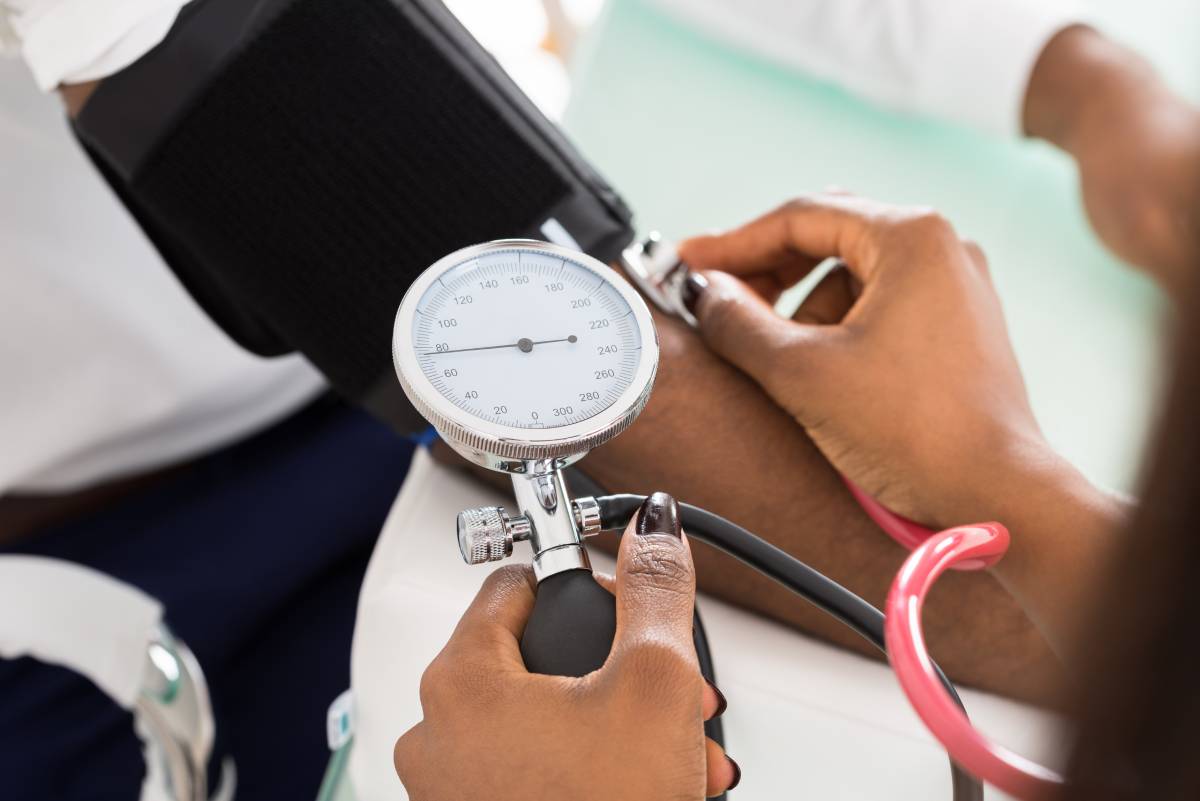The Etiology of Hypertension

Affecting roughly 1.4 billion adults around the globe [1], hypertension — also known as high blood pressure — is one of the leading causes of death worldwide. Nicknamed a “silent killer” due to its commonly asymptomatic presentation, hypertension increases the risks of heart attacks, aneurysms, cardiovascular disease, strokes, and other serious conditions. Therefore, catching the condition early is critical to the long-term survival of hypertensive patients. Diagnoses of the condition rely on measurements of pressure in blood vessels quantified in units of millimeters of mercury (mmHg), wherein the top number — the “systolic” — represents the pressure exerted by the left ventricle when the heart pumps blood to the rest of the body, while the bottom number — the “diastolic” — represents the pressure in the blood vessels when the heart is at rest. According to the World Health Organization (WHO), normal blood pressure consists of a systolic below 120 mmHg and a diastolic below 90 mmHg, while hypertension is designated as a systolic above 140 mmHg or a diastolic above 90 mmHg [2]. While over a billion people experience hypertension, their diagnoses fall into separate categories — primary and secondary — with a separate etiology by category.
The most common form of hypertension, primary hypertension composes 95% of cases [3]. While the condition is defined as hypertension in the absence of renovascular disease, renal failure, or other conditions that are known to cause secondary hypertension, the exact etiology of primary hypertension remains unknown. However, recent studies have highlighted several key factors that can influence the onset of hypertension, including increased sympathetic nervous system activity [4], an overactive renin-angiotensin-aldosterone axis in the kidney [5], and increased sodium retention [6]. First, excessive sympathetic nervous system activity causes repetitive vasoconstriction through the constant release of norepinephrine, which can lead to hypertension over time. Second, an overactive renin-angiotensin-aldosterone axis promotes the overproduction of the protein known as angiotensin II, which can also cause chronic vasoconstriction and hypertension. Finally, increased sodium retention leads to an increase in water retention and therefore blood volume and peripheral resistance, requiring the heart to pump blood even harder and causing hypertension. Although more studies must be conducted to elucidate other causes of primary hypertension, these three factors can be crucial in the development of this condition.
In contrast, secondary hypertension constitutes around 5% of hypertension cases [3]. While the etiology of primary hypertension is unknown, secondary hypertension is directly caused by another condition, such as renal failure, adrenal disease, kidney disease, pregnancy, hyperparathyroidism, sleep apnea, or other conditions that directly affect the cardiovascular system, adrenal glands, or kidneys. Hormone fluctuations, enzyme overproduction, and increased blood volume are some ways in which these conditions can directly cause hypertension. However, this form of hypertension can be alleviated by addressing the underlying condition.
While the causes of primary and secondary hypertension differ, the risk factors for both remain the same. Age, obesity, diabetes, poor diet, alcohol use, family history, and smoking are all associated with hypertension [1]. While hypertensive patients cannot change their age or family history, reducing salt intake, exercising, eating healthy diets, and quitting smoking can help lower their blood pressure. Furthermore, healthcare providers can enhance the prognosis of hypertensive patients by monitoring blood pressure and keeping their patients’ family histories and lifestyles in mind. Although systolic blood pressure levels of 115 mmHg or above are estimated to cause 7.6 million premature deaths per year [7], many of these deaths can be prevented by patients and providers working together in the pursuit of normal blood pressure.
References
1: Mills, K., Bundy, J., Kelly, T., Reed, J., Kearney, P., Reynolds, K., Chen, J., and Jiang, H. (2016). Global Disparities of Hypertension Prevalence and Control: A Systematic Analysis of Population-based Studies from 90 Countries. Circulation, vol. 136. DOI: 10.1161/CIRCULATIONAHA.115.018912.
2: Brown, I. (2021). Hypertension. Online article. URL: https://www.who.int/news-room/fact-sheets/detail/hypertension.
3: Carretero, O., and Oparil, S. (2000). Essential hypertension. Circulation, vol. 101. DOI: 10.1161/01.CIR.101.3.329.
4: Wyss, J. (1993). The role of the sympathetic nervous system in hypertension. Current Opinion in Nephrology and Hypertension, vol. 2. DOI: 10.1097/00041552-199303000-00014.
5: Turgut, F., Balogun, R., and Abdel-Rahman, E. (2010). Renin-angiotensin-aldosterone system blockade effects on the kidney in the elderly: benefits and limitations. Clinical Journal of the American Society of Nephrology, vol. 5. DOI: 10.2215/CJN.08611209.
6: Grillo, A., Salvi, L., Coruzzi, P., Salvi, P., and Parati, G. (2019). Sodium intake and hypertension. Nutrients, vol. 11. DOI: 10.3390/nu11091970.
7: Arima, H., Barzi, F., and Chalmers, J. (2011). Mortality patterns in hypertension. Journal of Hypertension, vol. 29. DOI: 10.1097/01.hjh.0000410246.59221.b1.
